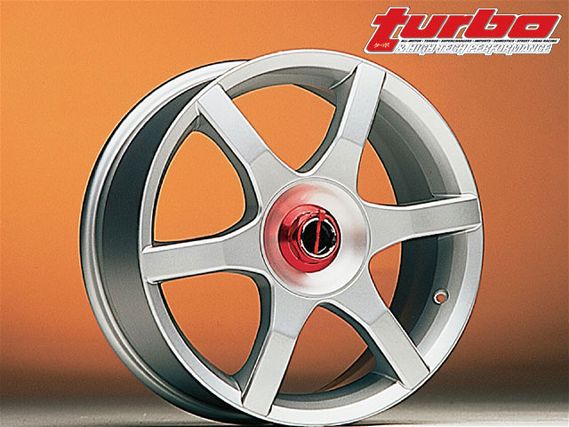 | Determining The Correct Wheel For Your- Fitment Tech
| Determining The Correct Wheel For Your- Fitment Tech
Customize /kstemiz/ verb. transitive. make or modify according to individual requirements.
Customizing cars has been an American tradition since the '50s and in the decades since, while the spirit has remained, the cars have changed. One of the constants through the years has been upgrading the wheels and tires of a given car, adding to its style while also increasing handling performance. Technological advances in the '80s and '90s has brought the level of creativity in wheel design to new levels. Who would have thought that one day enthusiasts would be complaining about having too many choices?
With thousands of wheels to choose from, it becomes hard to decide which wheel is right for you. First, of course, you have to determine if the wheel you're lusting after is made for your vehicle.
Bolt PatternThe bolt pattern determines if the wheel will bolt onto the hub of the vehicle. Most imports utilize a four-lug or five-lug bolt pattern. The number of bolts and the diameter of the imaginary circle (bolt circle) around the bolts determine the bolt pattern.
Rear Spacing And OffsetYou may have heard these terms before and they essentially mean the same thing. The rear spacing and offset is the distance from the wheel's inboard flange to the mounting pad. However, offset is categorize as positive or negative offsets. A negative offset wheel will mount closer to the vehicle's inner fender, which in turn pushes the wheel farther out. The advantages of a negative offset wheel are a wider rim drop (wheel lip). On a positive offset wheel the mounting area is closer to the wheel face which moves the entire wheel closer in toward the car (tucking). It is imperative that you get a wheel with the correct offset or rear spacing because not only will clearance be affected but the vehicle's handling could also suffer.
Appearance vs. RideAs you may know, as you go up in wheel diameter, the tire sidewall is directly affected. The larger the diameter, the thinner the sidewall. Although the larger wheel and tire package might deliver the awesome look you are craving, ride quality may suffer. The tire itself plays an important roll in the ride characteristics of the vehicle. The air in the tire acts as a cushion between the road and the wheel. It absorbs bumps, gravel, potholes and imperfections in the road. The thicker the sidewall in the tire, the more cushion you have to absorb imperfections of the road surface. The intended use of the car and future mods such as lowering coils should be considered when evaluating the appearance vs. ride on your car.
CostEveryone always wants to go big (wheel diameter) but going big has a price. A good general rule of thumb is the larger the wheel and tire package, the more it is going to cost. A set of 16-inch wheels is considerably less than 17s and so forth. Along with the wheels, you have to consider purchasing tires with them and, unlike the wheels, tires must be replaced. Unless your dad is Bill Gates, overall cost is one factor you should seriously consider before visualizing your ride rolling on 20s.
One of the best bets when choosing a wheel package is to check with the professionals. Your local wheel and tire shop should already know the correct backspacing, bolt pattern and sizes that will fit your vehicle. Turbo's Wheel Buyer's Guide features all the latest styles in sizes from 17-inches on up.
VEHICLE BOLT PATTERN {{{Honda Civic}}}/{{{CRX}}}/del Sol (All years) 4 x {{{100}}} {{{Acura Integra}}} (All years except Type-R) 4 x 100 {{{Toyota}}} MR-2 (All years)/{{{Supra}}} (1988-up) 5 x 114.3 {{{Honda Accord}}} (1990-up except V6) 4 x 114.3 {{{Mazda RX-7}}} (1993-up) 5 x 114.3 {{{Nissan 300ZX}}} (1990-up) 5 x 114.3 {{{Nissan Sentra}}}/{{{200SX}}}/NX2000 (1991-up) 4 x 100